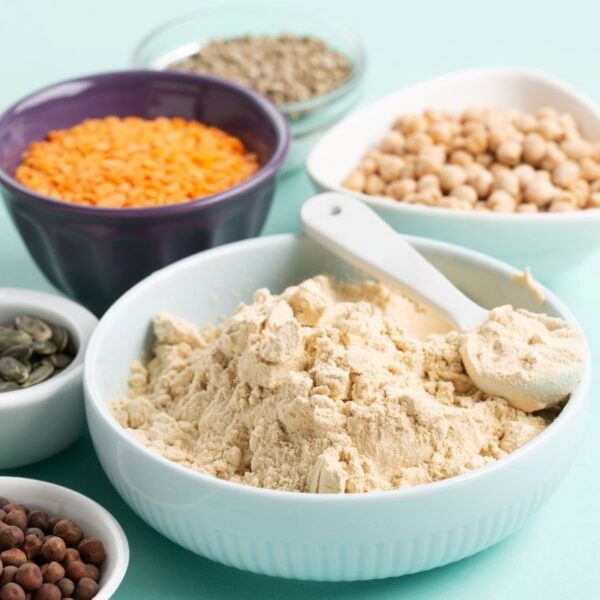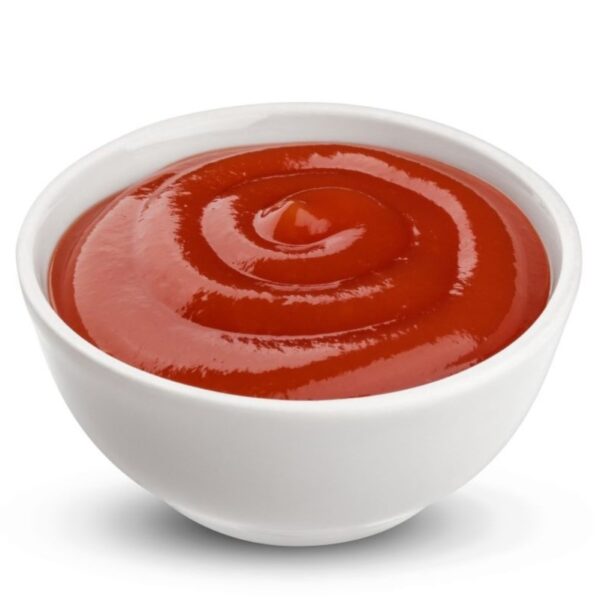Aspartic acid comes in two forms: L-aspartic acid and D-aspartic acid. It is one of the 20 common amino acids that form the basic building blocks of proteins. It is a non-essential amino acid produced naturally within the body and found in various dietary sources. In addition to its role in protein synthesis, aspartic acid is also used as an additive in food products. It is used as a dietary supplement in various food and beverage products, but one of its primary uses is producing Aspartame combined with the amino acid phenylalanine.
Aspartic acid is produced by the human body itself, even if not taken directly with food. Aspartic acid is one of the building-block amino acids responsible for synthesizing proteins and regulating hormones in the human body.
L-Aspartic acid becomes a part of the bodily proteins and helps develop antibodies to support the healthy functioning of the immune system.
D-aspartic acid is not used to synthesize proteins. It is typically found in the pituitary gland and the testes and is involved in regulating, releasing, and synthesis of testosterone and luteinizing hormone (LH).
Aspartic acid synthesizes four essential amino acids in humans: methionine, threonine, isoleucine, and lysine.
This article explores the role, sources, benefits, and potential risks of aspartic acid in food products, emphasizing its application in the food industry.
What is Aspartic Acid?
Aspartic acid is one of the major 𝝰 amino-acids with the chemical formula C4H7NO4. Like all other amino acids, it consists of a carboxylic and amino group. Aspartic acid has an acidic side chain that reacts with other amino acids, enzymes, and proteins in the body. There are two forms or enantiomers of aspartic acid, L-aspartic acid & D-aspartic acid. “Aspartic acid” can refer to an enantiomer or a mixture of two. Of these two forms, only one, “L-aspartic acid,” is directly incorporated into proteins. Aspartic acid is a white crystalline solid that is readily soluble in water.
Source: Wikipedia
Production of Aspartic Acid
There are three main methods to produce aspartic acid: isolation from a protein source, chemical synthesis, and enzymatic conversion. Hydrolysis of protein produces a mixture of amino acids from which L-Aspartic acid has to be separated. Chemical synthesis requires high temperature and pressure and results in a racemic mix, creating both L- and D-isomers. This process requires the additional steps of optical resolution and racemization to achieve the preferred L-isomer. Thus, enzymatic conversion is the currently favored route of production. The enzymatic conversion process exists in simple enzyme-substrate interaction or whole-cell enzymatic conversion, i.e., fermentation.
Applications in Food Industry
Aspartic acid is used as a dietary supplement in the nutrition industry. It is a dietary supplement with various other nutrients and a critical component for producing the artificial sweetener Aspartame.
Product Examples for Aspartic Acid
Aspartic acid can be found in nutraceuticals, dietary supplements, and nutrient premixes.
Products with Aspartame
For the production of Aspartame, L-aspartic acid and L-phenylalanine are produced by direct fermentation using Brevibacterium flavum and Corynebacterium glutamicum bacterial strains. A centrifuge separates the mixture from the bacterial culture when enough amino acids are made. To obtain the desired amino acids (L-aspartic acid and L-phenylalanine) ion exchange method is used. After the selected amino acids are separated, they are crystallized, and the crystals are separated again by centrifugation. The formed crystals are then converted to aspartame by reacting with acetic acid.
| Bakery | Croissants, Bread, Cookies, Cakes, Muffins, Pancakes |
| Cereals & Snacks | Breakfast Cereals, Cereal Bars, Chips, Extruded Snacks, Nutritional Snacks |
| Confectionary | Candies, Chewing Gums, Chewy Sweets, Confectionery Coatings, Frostings, Table Top Sweeteners |
| Dairy | Croissants, Breads, Cookies, Cakes, Muffins, Pancakes |
| Beverage | Yogurt Drinks, Functional Drinks, Packaged Juices, Powdered Soft Drinks |
| Convenience Food | Canned Meals, Chocolate Spreads, Protein Bars |
Typical Properties
| Chemical formula | C4H7NO4 |
| Molar mass | 133.103 g·mol−1 |
| Appearance | Colorless crystals |
| Density | 1.7 g/cm3 |
| Melting point | 270 °C (518 °F; 543 K) |
| Boiling point | 324 °C (615 °F; 597 K) (decomposes) |
| Solubility in water | 4.5 g/L |
| Acidity (pKa) | 1.99 (α-carboxyl; H2O) 3.90 (side chain; H2O) 9.90 (amino; H2O) |
| Conjugate base | Aspartate |
Typical Formulations
Nutritional Supplement 1 (Capsule Dosage)
| Agent | Composition | Unit |
| L-Lysine (as L-lysine hydrochloride) | 50 | mg |
| L-Valine | 50 | mg |
| L-Tryptophan | 50 | mg |
| L-Phenylalanine | 45 | mg |
| L-Methionine | 40 | mg |
| L-Leucine | 35 | mg |
| L-Threonine | 35 | mg |
| L-Isoleucine | 30 | mg |
| L-Arginine | 25 | mg |
| L-Histidine (as L-histidine hydrochloride) | 25 | mg |
| L-Tyrosine | 44 | mg |
| L-Carnitine L-Tartrate | 40 | mg |
| L-Serine | 40 | mg |
| L-Glutamine | 40 | mg |
| L-Aspartic acid | 35 | mg |
| L-Proline | 30 | mg |
| L-Glycine | 30 | mg |
| Taurine | 30 | mg |
| L-Cysteine (as N-Acetyl Cysteine) | 30 | mg |
| Gamma aminobutyric acid (GABA) | 25 | mg |
| L-Alanine | 25 | mg |
| L-Glutamic acid | 25 | mg |
| Coenzyme Vitamin B2 | 1.1 | mg |
| (Flavin mononucleotide/Riboflavin) | ||
| Vitamin B3 (Niacinamide) | 1.1 | mg |
| Vitamin B6 (Pyridoxal 5-Phosphate) | 1.5 | mg |
| Vitamin B12 (Methylacobalamin) | 21 | mcg |
| Folate (Calcium Folinate) | 150 | mcg |
| Magnesium (Amino acid chelate) | 16 | mg |
Nutritional Supplement 2 (Capsule Dosage)
| L-Lysine (as L-lysine hydrochloride) | 50 | mg |
| L-Valine | 50 | mg |
| L-Tryptophan | 50 | mg |
| L-Phenylalanine | 45 | mg |
| L-Methionine | 40 | mg |
| L-Leucine | 35 | mg |
| L-Threonine | 35 | mg |
| L-Isoleucine | 30 | mg |
| L-Arginine | 25 | mg |
| L-Histidine (as L-histidine hydrochloride) | 25 | mg |
| L-Tyrosine | 44 | mg |
| L-Carnitine | 40 | mg |
| L-Serine | 40 | mg |
| L-Glutamine | 40 | mg |
| Aspartic acid | 35 | mg |
| L-Proline | 30 | mg |
| L-Glycine | 30 | mg |
| Taurine | 30 | mg |
| L-Cysteine (as N-Acetyl Cysteine) | 30 | mg |
| Gamma aminobutyric acid (GABA) | 25 | mg |
| L-Alanine | 25 | mg |
| L-Glutamic acid | 25 | mg |
| Coenzyme Vitamin B2 | 1 | mg |
| (Flavin mononucleotide/Riboflavin) | ||
| Vitamin B3 (Niacinamide) | 1 | mg |
| Vitamin B6 (Pyridoxal 5-Phosphate) | 1 | mg |
| Vitamin B12 (Methylacobalamin) | 20 | mcg |
| Folate (Calcium Folinate) | 133.3 | mcg |
| Magnesium (Amino acid chelate) | 16 | mg |
Formulation Considerations
Stability Profile of Aspartic Acid
Aspartic acid has one of the highest temperature stabilities. The optimum pH for Aspartic acid functioning is 2.5-3.5. Aspartic acid has varying results for oxidation depending on the oxidizing agent and temperature.
Nutritional Effects of Aspartic Acid
Aspartic acid is a non-essential amino acid used in various dietary supplements as a single amino acid or a mixture of other amino acids or minerals. It has multiple claimed benefits in human bodies like (but not limited to) cardiovascular protection, metabolic booster, hormone release and control, energy production in the body, liver function accelerant, ammonia antidote, fatigue eliminating medicament, etc.
Biological Activity
- Metabolic booster- Aspartic Acid is involved in synthesizing various amino acids, one of which is Methionine, which is involved in various metabolic pathways, including the methionine cycle, the transsulfuration pathway, and polyamine biosynthesis.
- Protein building block- As mentioned earlier, Aspartic Acid is involved in the synthesis of four major amino acids, namely Methionine, Threonine, Isoleucine, and Lysine.
- Hormone production and release- The pituitary gland stimulates the secretion of the following hormones: prolactin (PRL), luteinizing hormone (LH), and growth hormone.
- Helps in healthy nervous system functioning- D-Aspartic acid plays a major role in nervous system development and hormone regulation. It also acts as a cell-to-cell signaling molecule.
- Intermediate for production of artificial sweetener- Aspartic acid is used as the main constituent for producing artificial/alternative sweetener Aspartame.
Sensory Attributes
Aspartic acid for dietary supplements has a sour taste, pleasant fruity aroma, and light brownish pink.
Dosage & Solubility
In humans, the acceptable dosage for aspartic acid in food and supplements is 6.54 g/day (FNB/IOM 2005), thus representing a UC equal to 93.43 mg/kg BW/day. No NOAEL or LOAEL has been determined in humans.
The dosage for D-Aspartic acid is between 2000- 3000 mg, but it may vary depending on the supplementation. Similarly, L-Aspartic acid is dosed at about 2000 mg if consumed three times daily.
In Vitro Solubility of L-Aspartic acid
| 1M NaOH | 100 mg/mL (751.31 mM; ultrasonic and adjust pH to 12 with NaOH) |
| H2O | 2 mg/mL (15.03 mM; ultrasonic and warming and heat to 60°C) |
| DMSO (Dimethyl sulfoxide) | < 1 mg/mL (ultrasonic;warming;heat to 80°C) (insoluble or slightly soluble) |
| Other Considerations | D-Aspartic acid is Soluble in water and HCl. Insoluble in ether and alcohol. |
Regulatory Information
Aspartic acid is FDA-approved. It is Generally Recognised as Safe according to the Food and Drug Administration Department of Health and Human Services under section CFR Title 21 Sec. 582.5017.
| Regulations | Status |
| FDA Approval | Aspartic Acid is recognised as safe for use as a nutraceutical supplement by FDA regulations. |
| EU Regulation | Aspartic Acid can be used in food applications and as a supplement according to EU Regulations. |
Source: Eur-Lex
Fun Facts about Aspartic Acid
- Aspartic acid is a component of the widely used artificial sweetener aspartame. Combined with phenylalanine, it creates a substance about 200 times sweeter than sugar!
- “aspartic acid” derives from “asparagus,” as it was first isolated from asparagus juice in 1868.
- It has a close structural relative called glutamic acid. Both are acidic amino acids and have very similar chemical structures.
- Aspartic acid is essential in plants for synthesizing other amino acids and as a precursor for several vital compounds, demonstrating its importance beyond animal life.
Additional Resources
- Encyclopedia.pub – L-Aspartic acid
- Transparency Market Research – Aspartic acid Market
- News-Medical – What is Aspartic acid?
- Encyclopedia.pub – Methods of Synthesis of Aspartic acid
- Wikipedia – Aspartic acid
- MedlinePlus – Aspartic acid
- SafeFoodFactory – Aspartame
- Knowde – Niusource Aspartame
- Knowde – Hamburg Fructose Aspartame
- Knowde – HSWT France Aspartame Fine Granular 150 Pharma
- Wikipedia – Aspartic acid
- Google Patents – US20070286909A1
- BMC Biophysics – Thermal Stability of Asn and Asp Residues
- Knowde – Regar Chemicals L-Aspartic acid
- Knowde – Yantai Hengyuan Bioengineering L-Aspartic acid
- BulkSupplements – L-Aspartic acid
- Examine – D-Aspartic acid
- MedChemExpress – L-Aspartic acid










